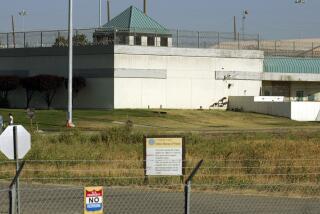Vacation Memories : Our Old Irish Castle
- Share via
In some mysterious way, the forces that were to link my family ancestral castle with a law school in America were probably under way when we landed in Shannon.
Even if I’d known that, I couldn’t have been more excited as my husband and I, first in our family to visit Ireland, drove through the countryside, drawing nearer and nearer to the ancient structure just southwest of Dublin.
I remembered, as if told a few minutes ago instead of 50 years back, my mother’s stories of our Irish castle and my small child’s question: “Mom, does it have a drawbridge and a moat and towers?”
Her answer--”I don’t know, honey, I’ve never seen it”--didn’t stop me from etching into my mind what our castle really looked like. It was a fairy-tale castle straight from my picture books. And so it remained all those years--misty, ephemeral, dreamy--until on an Irish summer day it wafted away on a whispering wind.
Under white billowy clouds that tumbled in a sky as sparkling blue as Irish eyes, a stunted tower stood, attached to the old stone wall we’d been following for the last few minutes.
“Why, those Irish . . . they’ve directed us to the wrong place. This can’t be it,” I said to Art.
But it was.
No rolling lawns of the fabled green, no turrets, no spiraling staircases, no drawbridge or moat graced the scene. Just a single tower of stone rose from the soil. This was Ballyburr, steeped in 800 years of history. I stood quietly beside the car and stared.
Ancient Battles
Vines clung to its gray sides and draped themselves over a deep cut in the broken roof line where, 40 feet above the entryway, defenders had spilled bubbling hot tar onto attackers. Every few feet, long narrow slits were cut into the walls. From them archers had let loose lethal arrows against those who, for political or religious reasons, had tried to wrest from them their properties.
The massive wooden door, six inches thick, swung open, and out walked the tenant of the present owner. A tiny old woman, back curved like a parenthesis, hobbled toward us, her long black dress dragging on the ground.
Maggie Marnell invited us into the first-floor kitchen for a cup of strong tea, the second most popular brew in Ireland, and a talk-fest, of which the Irish must be world masters.
A stone staircase, narrow and slippery with mold, wound around the walls to the second-floor loft and third-floor parapet. Without a railing, it was dangerous, but a sense of intrigue lured us up to a spot where a loose brick, 30 years ago, had tempted someone to pry it out. There, exposed to human eyes for the first time in almost 400 years, had been a rosary in coils.
Visitor From Rome
I didn’t know it then, but a few years later I was to see that rosary given to a cousin, a priest. Family records and history dated the rosary--made with simple, rust-colored wooden beads--and a metal crucifix to a secret visit by a cardinal from Rome during the reign of Elizabeth I, when Irish lands and properties were being confiscated from those whose loyalty was to the Pope and Rome, not to the queen and England.
Months later my husband transferred what we saw that day onto canvas and entered his painting of the old castle in the lawyers’ art exhibit of a California Bar convention. He won second place in oils.
On that day he came home and, with that I’ve-done-something-you-may-not-like look known to most spouses, said, “Honey, I promise to paint you another picture of the castle.”
“Has it been stolen? Lost? Burned?” I blurted out.
“No, no. Nothing like that. The dean of the law school at UCLA called and asked that I donate the painting to the school to be hung in the halls.”
“Why would he want a picture of an Irish castle for a law school,” I asked Art.
Steeped in the Law
He shrugged. “He gave me a lesson in ancient Irish culture, overlooked for the most part by historians. He told me how Ireland had escaped Roman invasion and was let alone to develop in its own way. Then he said, ‘So you see, Mr. Guy, the picture of the Irish castle is a symbol of the tradition and history of our American law, which is based on English common law, much of which was influenced by the Irish.’
“Honey, I couldn’t say no to him.”
Today another painting of Ballyburr hangs in our living room. But the one that is evocative to me is the one that hangs in the halls of the law school at UCLA. I sometimes wander over there, gaze at it and think, “You’re finer than any fairy-tale castle I ever dreamed of.”
More to Read
Sign up for Essential California
The most important California stories and recommendations in your inbox every morning.
You may occasionally receive promotional content from the Los Angeles Times.













